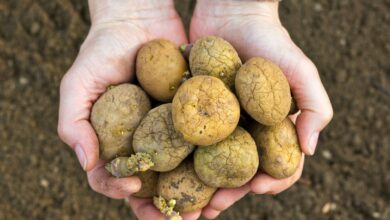What is Cold Sweetening – How to Avoid Cold Sweetening of Potatoes

Americans eat a lot of potato chips and french fries – 1.5 billion chips combined and a staggering 29 pounds of french fries for every American citizen. That means farmers have to grow tons of potatoes to satisfy our almost insatiable thirst for salty potatoes. To meet this need, potato growers produce massive quantities of tubers during the growing season and then store them in cold storage. Unfortunately, this results in the potatoes being sweetened when cold.
Cold sweetened potatoes may not look like much, but that’s probably because you don’t know what cold sweetening is. Read on to find out what causes cold sugaring and how to avoid it in potatoes.
What is «cold sweetening»?
Cold sweet potatoes are about what they look like. Potatoes should be stored at low temperatures to prevent sprouting and to minimize the spread of disease and losses. Unfortunately, cold storage turns the starch in the tuber into glucose and fructose, or sugar. This
This process is called «cold sweetening of the potato».
Why is cold sweetening a problem? French fries and potato chips made from over-sweet potatoes stored in the cold become brown to black during processing, have a bitter taste and may contain high levels of acrylamide, a possible carcinogen.
What causes cold sweetening?
Cold sweetening occurs when an enzyme, called invertase, causes changes in the sugars in the potato during cold storage. The potato is composed more of reducing sugars, mainly glucose and fructose. When raw potatoes are sliced and fried in oil, the sugars react with the free amino acids in the potato cell. This results in potatoes that are brown to black, which is not really a selling point.
Although studies have been done on the biochemical and molecular changes involved here, it is not really understood how this process is controlled. However, scientists are beginning to get some ideas.
Prevention of cold perspiration
Researchers at the Plant Crop Research Center Unit in Madison, Wisconsin, have developed a technology that decreases invertase activity; they turn off the vacuolar invertase gene.
They were able to establish a direct correlation between the amount of vacuolar invertase and the resulting chip color. A potato with the gene turned off turned out to be a normal, light-colored potato chip. Our sincere thanks and endless gratitude to these brave souls who will not rest until they have resolved the potato chip situation in America!
Prevention in the garden is another matter. The best solution is to store your potatoes in a cool (but not too cold) and dry place and not for an extended period of time.
Although cold sweetening of potatoes is not very popular, many root crops, such as carrots and parsnips, actually benefit from this type of storage, becoming sweeter and tastier.




